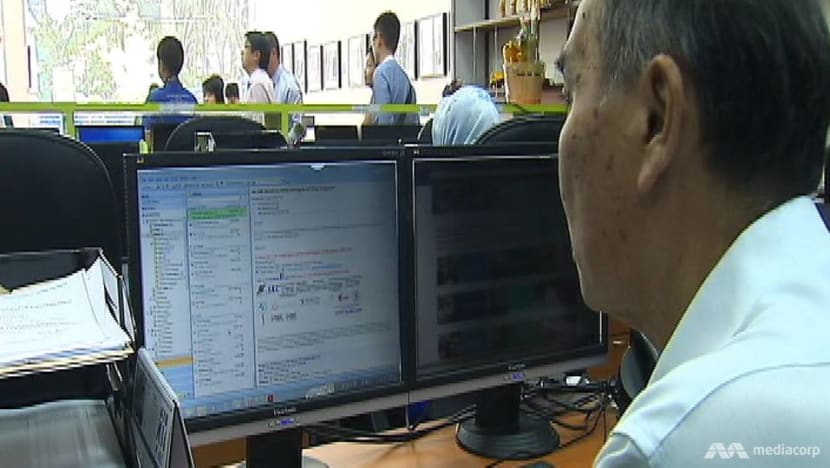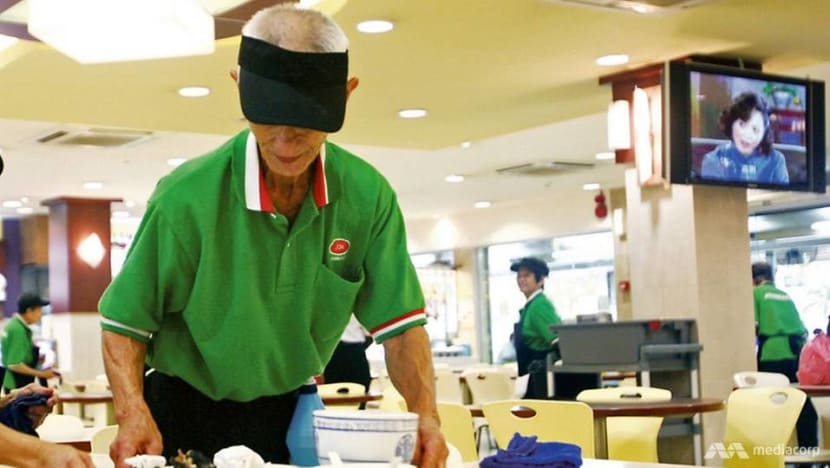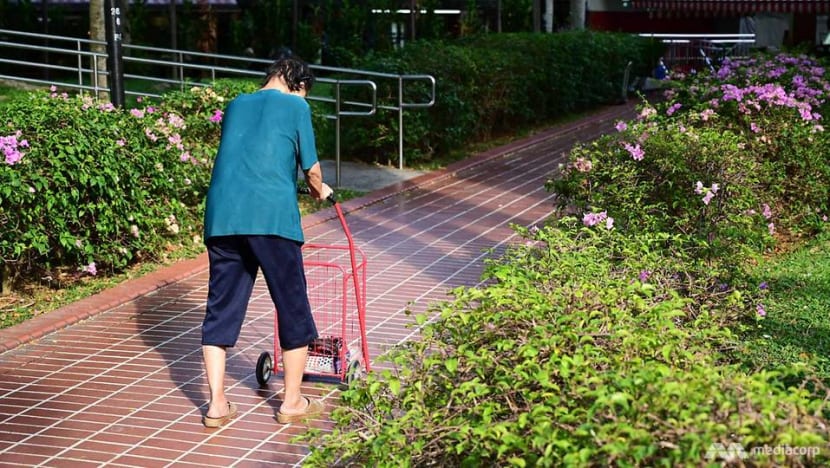commentary Commentary
Commentary: Seniors do well at their jobs yet ageist myths and negative stereotypes persist
To move beyond retirement and re-employment will require bold changes from companies and supervisors, says SUSS’ Helen Ko.

File photo of an older office employee.
SINGAPORE: In his National Day Rally speech last Sunday (Aug 18), Prime Minister Lee Hsien Loong announced that the retirement and re-employment ages would be raised to 65 and 70 respectively by 2030, to facilitate those who wish to continue working to do so.
The Central Provident Fund (CPF) contribution rates for older workers will also rise, to enhance older workers’ financial security. Details were announced the day after by Manpower Minister Josephine Teo.
Today, the life expectancy of Singaporeans has increased to almost 85 years, compared to 76 years in 1990. Latest statistics indicate that Singaporeans have some of the longest healthy years.
It would therefore be a great waste of precious human capital if the strengths and potential of older workers are not proactively harnessed.
READ: Commentary: The hidden dividends of a longer life
While raising the retirement and re-employment ages is a step in the right direction, the issues surrounding employment of older workers extend well beyond that.
CHANGE OF ATTITUDES ABOUT OLDER WORKERS
Extensive evidence demonstrates that older workers are just as effective at work as their younger colleagues.
In fact, fewer customer confrontations have been attributed to the presence of older workers. They tend to have better emotional control, crisis management and problem-solving capacity.
There is no consistent evidence either that suggests older workers are less productive than younger workers. Job performance is generally the same across age groups.
There is also little evidence that chronological age alone is a strong determinant of health.
Yet, studies consistently reveal an overall negative bias against older workers. Research from Singapore also found that expectations of work withdrawal, assumptions about health and decision-maker’s age influence negative attitudes towards older workers.
READ: Commentary: Watch for casual ageism and other signs of caustic attitudes about work and old age

Even human resource managers responsible for age-related policies hold stereotypical views of older workers. These myths and stereotypes, detrimental to age-diverse workplaces, need to be challenged.
The treatment of older workers by their employers and colleagues has significant influence on their decision to either continue working or retire.
In general, it is not the age of a worker that is most important but the demands of work exceeding a worker’s capabilities. In this modern era, health and technology improvements mean there are few jobs that the average 70-year-old cannot do.
CREATING CONDUCIVE WORK PLACES
Studies have shown that ergonomic workplace design is particularly important for older employees because efficiency of the senses, physical strength and speed decline with age.
Poor health, a major factor in shortening working life, is often an outcome of poor-quality, work and workplace design and poor management practices.
READ: Commentary: It is high time for a Ministry on Ageing Issues
To sustain the work ability of employees, employers could institute regular health checks, such as occupational health and general health care examinations, and organise educational programmes.
Topics could include nutrition, smoking cessation, managing stress and preventing burnout. Fitness, sports and recreation would also benefit employees.

Such activities need not be costly. One creative employer used cardboard that her company no longer needed as exercise mats for employees to carry out stretching exercises.
She even converted her factory floor space into a gym in the evenings.
CHOICE OF FLEXIBLE WORK
Local surveys reveal that many older workers would like to work part-time and even go back and forth between periods of work and periods of leisure.
Some want to spend more time with their families; others want to travel overseas to visit their children and grandchildren for a longer duration than two or three weeks but then return to work.
Employers could benefit by making such opportunities more available. These may include allowing an older worker to take several months’ leave and then return to the job. Coverage of duties would have to be arranged and flexibility and creativity exercised.
READ: Commentary: Still paying off your housing loan at 65? Five rules to a happy retirement
A system could be put in place that is similar to maternity or unpaid leave for women to look after a new-born baby or young children. Another option is to have two older workers share a job, with each working four-hour shifts each day.
“Phased retirement” is another option in which an older person gradually decreases their number of work days a week until retirement. The Singapore University of Social Sciences applies this, allowing older employees and parents to do a two-day, three-day or a four-day work week.
CULTURE OF RESPECT
Increasingly, with three or four generations working alongside one another, employers need to be cognisant of the disparate needs, interests and motivations, and foster a culture of respect and consideration, within the context of an already diverse workforce comprising various ages, nationalities and gender.

Corporate guidelines for an inter-generational human resource policy would need to be developed, and diversity concepts would have to be discussed and promoted in organisations.
In addition, workshops with supervisors to examine and reflect on their personal age stereotypes could be carried out. Staff surveys on attitudes about age, supervisors’ behaviour and feedback from other employees could be obtained.
The exchange of knowledge between older, experienced employees and younger employees could be systematically promoted through mentoring and reverse-mentoring roles. Older employees can be paired with and mentored by younger employees on topics such as technology and social media.
Other inter-generational collaborations, activities and teams could enhance awareness, appreciation and cooperation between the young and old.
READ: Commentary: People ready to retire later but preparing older workers will require more than reskilling
PSA is one great example. With a focus on its people as one of its core values, it wins as a team by respecting, nurturing and supporting one another. It fosters innovation by embracing diversity, and the combined knowledge and experience across generations. Through activities such as cognitively stimulating games and organised walks, bonds between the young and the old are strengthened.
CAREER CRAFTING
Employers should support the personal development of older workers through appropriate tools and processes.
After long periods of employment, it is important for employers to offer older employees the opportunity to reflect on where they stand in their career and what further development steps should be taken.

This would facilitate older employees to question their career situations, assess their potential and need for further training, and articulate their ideas and aspirations on their continuing career. Contrary to assumptions, research in Singapore has revealed that older workers want to learn new tasks and take on new work roles.
Employers could even support a personal development plan, for example, by providing workshops on career assessment. These could be organised externally (by professional moderators) or internally.
Occupational strengths and weaknesses, professional career and the current work situation of participants are examined with colleagues of similar age. Development prospects are worked out, with career moves planned.
READ: Commentary: Singapore’s bold bet on seniors and valuable years of life experience
The focus of such programmes is on what employees can do to fashion their own career situation to be more interesting, less stressful and more aligned with their personal circumstances.
This is likely a win-win proposition for both employers and older employees. Temasek Polytechnic introduced such a progressive programme for its older employees several years ago.
DISPEL AGEIST MYTHS
While the rationale for raising the retirement and re-employment ages is to provide opportunities for those who wish to continue working, by itself, it is insufficient.
In fact, such a legislation might precipitate the opposite effect, and deter employers from hiring older workers, particularly those who are nearing retirement age.

To promote employment of older adults, the most crucial ingredient is a fundamental change in attitudes of employers towards older workers. Employers must be fully convinced about the value that older workers bring to their organisations.
Considering the evidence about older workers, ageist myths unsubstantiated by research must be dispelled.
READ: Commentary: Growing old is not a slow march toward obscurity
In the current developing environment of the fourth industrial revolution, disruptive technologies and trends such as the Internet of Things, robotics, virtual reality and artificial intelligence are making a profound impact on the way we live, work and relate to one another.
This speed of transformation and breakthroughs has no historical precedent, disrupting every industry in every country, and changing entire systems of production, management and governance.
Against this backdrop, the future of work is likely to be very different from the work of today. In fact, the notion of a retirement age may be obsolete.
Dr Helen Ko is Senior Lecturer for graduate Gerontology programmes at the Singapore University of Social Sciences and concurrently Executive Director of Beyond Age, a silver workforce training consultancy. She has been in the sector for over 30 years and was previously Executive Director at the Centre for Seniors and Chief Executive Officer of St Luke’s Eldercare.















